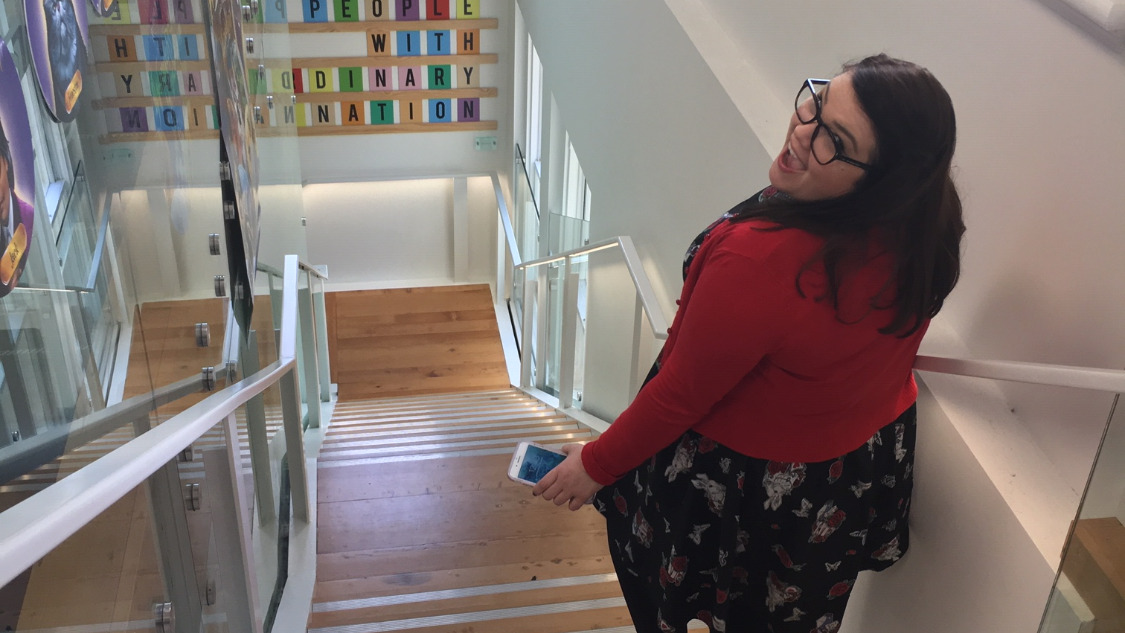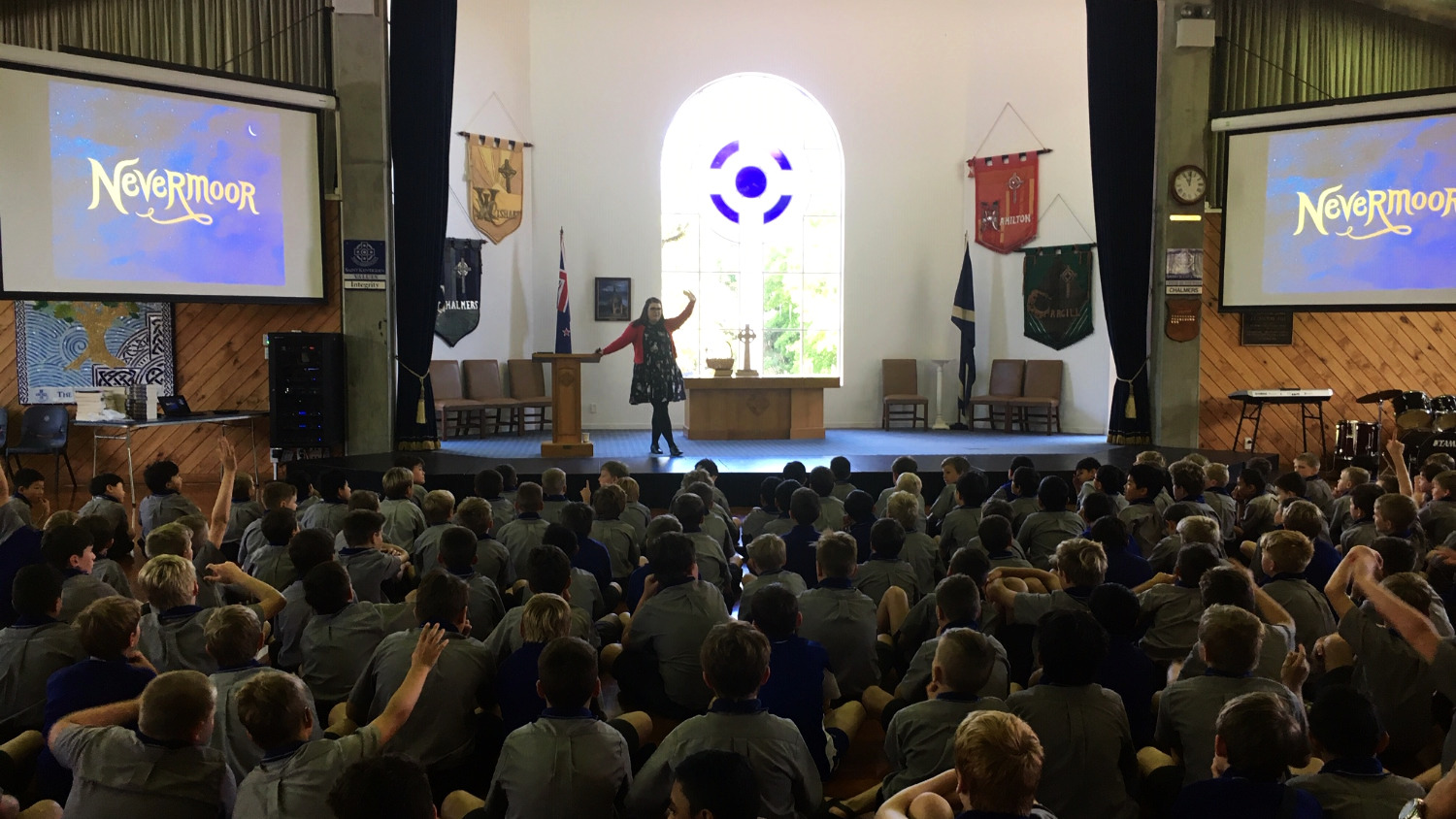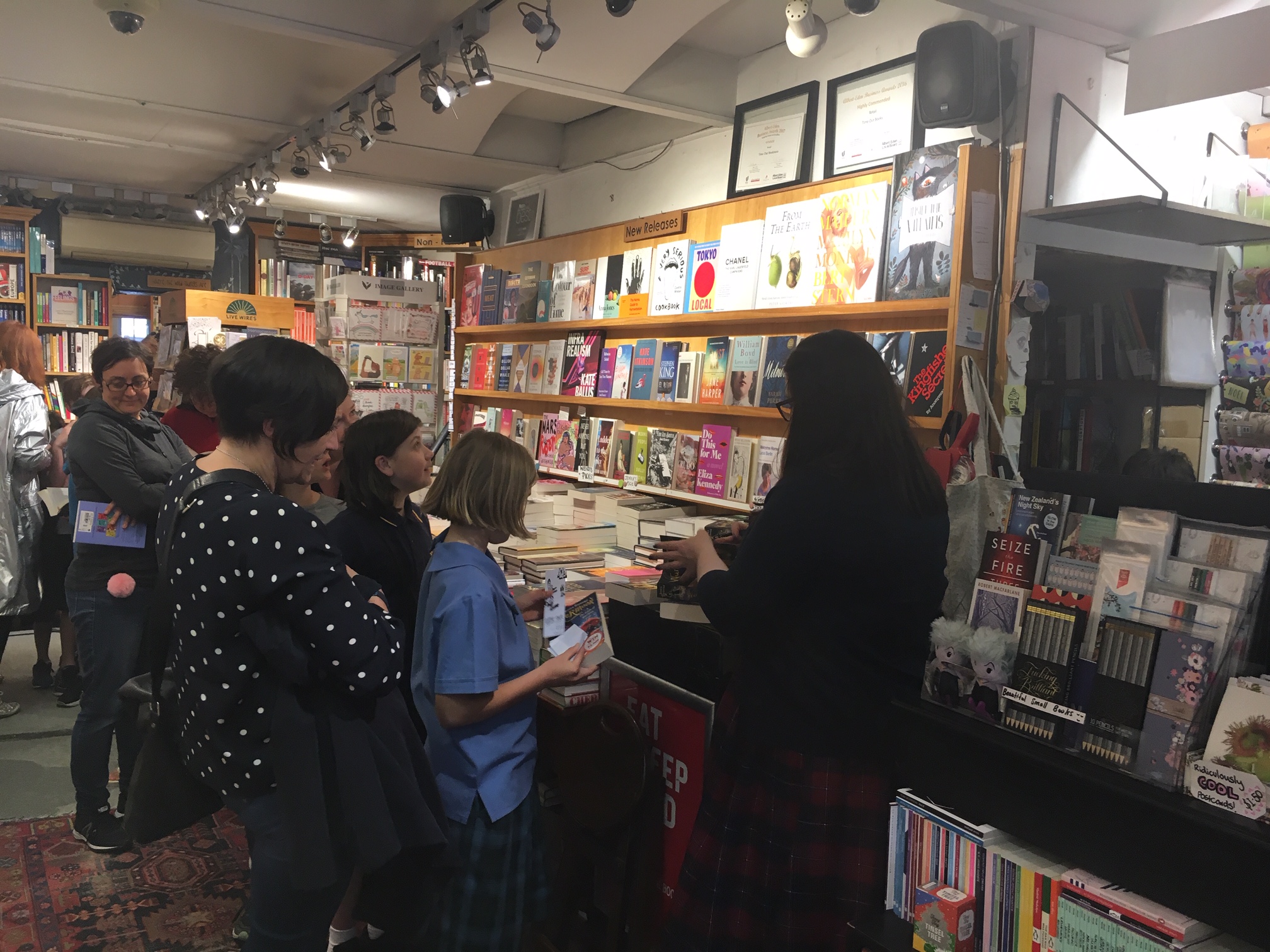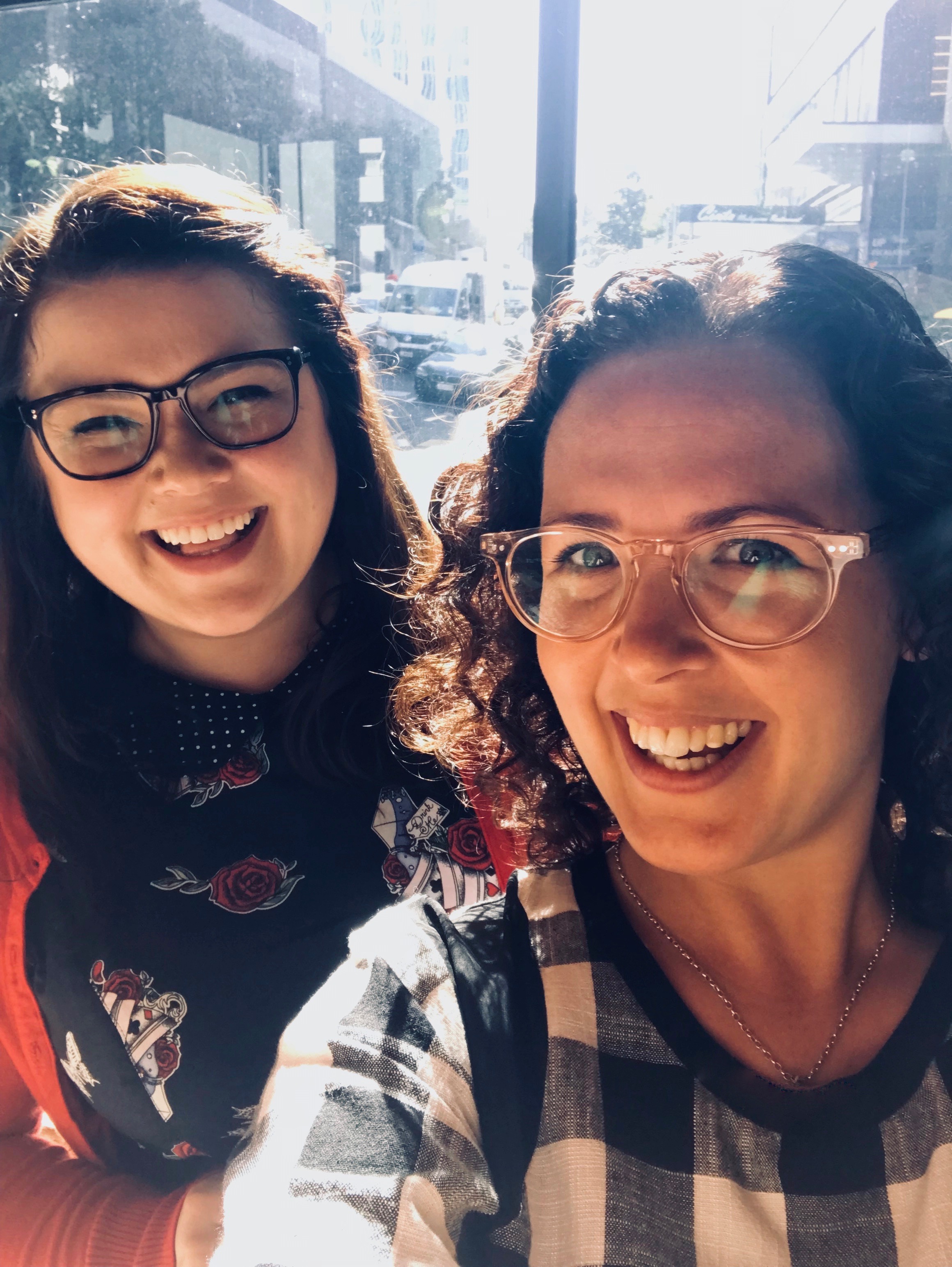October 2017 saw Sunshine Coast local Jessica Townsend hit the big time. Her children’s novel Nevermoor was the biggest-selling Australian children’s debut since records began. It swept the world into a frenzy and propelled her into literary stardom. The second instalment, Wundersmith, has been eagerly anticipated and the magic and mystery will hold readers in its grasp until the very last page.

Having passed a series of dangerous trails, 12-year-old Morrigan Crow has been accepted into the prestigious Wundrous Society, along with nine other children with extraordinary talents. Finally, she can escape the shackles of life as a Cursed Child and find her place in the world with new friends. But it seems that prejudice has followed Morrigan to the city of Nevermoor. Her newfound powers as a Wundersmith are too frightening for her new teachers and classmates.
With her Patron Jupiter endlessly away on important Wunsoc business, Morrigan is left alone to navigate her troubled feelings: anger at being left out, and confusion about her true identity. In a series of fast-paced and nail-biting scenes, Morrigan faces real danger, as Wunsoc Members go missing, ghostly creatures made of bones stalk Morrigan and the fragile loyalties of her new friends are tested when someone starts blackmailing members of her peer group, Unit 919. As her burgeoning power grows unchecked, Morrigan is tempted by the most evil Wundersmith in history, the only one who seems to understand her predicament.
As in Townsend’s first novel, lessons and allegories are expertly woven into the plot. Townsend plays on themes of injustice and prejudice, friendship and loyalty, as Morrigan struggles with moral quandaries, discovers that even those in positions of authority can be flawed, and learns to trust her inner compass. This is children’s literature at its best: offering children a chance to grapple with complex issues, and experience troubling scenarios through a character they identify with – within the safety of a fictional story.
This is children’s literature at its best: offering children a chance to grapple with complex issues, and experience troubling scenarios through a character they identify with – within the safety of a fictional story.
Once again, Townsend has created a richly imagined world. Wundersmith has a darker edge than Nevermoor, but absurd humour and Townsend’s trademark wit always offer comic relief. Wundersmith skilfully set up for revelations that may come in future instalments, leaving us hungry to know what ingenious surprises Townsend has planned for readers.Jessica and I sat down to talk in the midst of her busy ANZ tour schedule. She has a real warmth and gregariousness about her coupled with the effervescence we love from her writing. While we had met on her previous tour, I suspect she is like this with everyone. I traveled with her the next day to a booksellers’ breakfast, where she effortlessly connected with others, then onto St Kentigern College where she wowed an auditorium full of boys. It was plain to see that she had them engaged and enthralled with her extraordinary presentation.
R: Nevermoor was a runaway success! How has this changed your life and what have you been able to do that you may not have been able to previously?
J: It has completely transformed my life but also not at all. I have a strange duality to my life now. It has afforded me this fantastic life where I get to be a full-time author.
I get to go on tour, which is the weirdest and coolest thing and it’s such privilege! I get to meet amazing people – and do crazy things like have high tea with a bunch of booksellers in the middle of a tea plantation, which is ridiculous! I shouldn’t get to do that on a work day! But my day to day life is still exactly the same, just me in my PJ’s tapping away on my laptop. It has also allowed me to live in two cities. I now can spend half my time on the Sunshine Coast and half in London, which has always been the dream for me. I love the city of London, but being an introvert, I really love being at home with my family too.

R: Nevermoor won a gob-smacking seven awards, what has this meant to you?
J: I am so very grateful for the awards. They took me by such surprise; I didn’t even know they existed before I was nominated.
R: This is an industry that has only recently become lead and populated by women. Tell me of your experience of this?
J: I am lucky to have great, smart woman around me who are smoothing the way and bolstering the experience for me. My four editors are women, and I have so much admiration for them. This is an environment where women are thriving and taking the lead, but they want to see other women succeed as both mothers and as working professionals. They want their whole to community to thrive. It is one of the great joys of this industry.
This is an environment where women are thriving and taking the lead, but they want to see other women succeed as both mothers and as working professionals.
R: Nevermoor took you 10 years to write and perfect whereas Wundersmith was written in a year whilst touring. How did you find time to write and do you feel like you achieved all you wanted to?
J: I am extremely optimistic about what I can do, so I am lucky to have an agent to remind that I can’t say ‘yes’ to everything and still write books. It was really important to me that I didn’t end up with ‘book two syndrome’. I had to live up to my own expectations. For this reason, it ended up being seven months late! But I had a really supportive team, and all credit to them for getting it to print on time.
R: Do you have a planning process while writing and did this have to change when writing Wundersmith?
J: I have always had a really clear, plotted road map. Although when writing Wundersmith, characters emerged and things happened/threads emerged that I hadn’t planned. I don’t write chronologically, rather I start with the ‘tent pole moments’ before filling in the detail. My planning document alone for Wundersmith was 10,000 words!
When I came time to locking down ideas and actually writing the book I found it really nerve-wracking. Things like the structure of the Wundrous Society or how a particular character would look. It felt like plucking butterflies out of thin air and pinning them to a chalkboard.

R: How were you able to expand the world without feeling like you were going too far? Did you trust your own instincts here or did your editors guide you?
J: It is really tricky to balance. There are so many things that I am dying to reveal about the characters and the world of Nevermoor but I know they need to be held back, as they will be integral to the plot in future books. Sometimes I hold too much back, things the reader needs to know. This is where my editors come in – they are my first readers and can be the person I can’t be, because they don’t know what’s coming.
R: Let’s talk about your characters. Do you have a favourite character to write?
J: Oh, so many of them, but I love writing Frank the Vampire Dwarf because he is so outrageous.
I was also excited to write more about Hawthorne and his family. They are fun, they all get along and bolster each other. Hawthorne has the optimism and confidence of a well-loved and supported child but also an innocence in the way he comes at the world. He is great fun to write.
R: Jupiter is a character that everyone loves but he is quite absent in Wundersmith, how did it feel not to write so much about him?
J: In any other story Jupiter would have been the hero. He’s dashing and funny and he’s an explorer! But he’s not the hero in this story, Morrigan is. In Wundersmith, Morrigan needed to take more control of her world and unfortunately for her to do this, Jupiter needed to be more absent. But we will learn more about him, where he came from and some of his secrets in future books.
R: These stories are a bit scary with a macabre overtone, how do you balance the scare factor and do you have age range in mind?
J: The intended age is 8 years plus, but I recognise that teens and adults read these stories too. These are scary stories and they will get a bit darker. But the book opens with the funeral of a child so I feel like there were no false pretenses here. I also think children enjoy being a little scared within safe environments. These were the kind of stories and shows I loved growing up and 80s viewing was particularly sinister. That being said, I am not looking to write horror stories! My aesthetic is really to have lots of scary and lots of silly things sitting alongside each other.
My aesthetic is really to have lots of scary and lots of silly things sitting alongside each other.
R: A number of lessons and allegories run through both Nevermoor and Wundersmith. Do you believe life lessons are an important element of children’s literature?
J: The characters I enjoy writing and reading are complex and contradictory. There seems to be an inclination is children’s fiction to make everything very black and white – for instance the villains are just evil. But the better villains are shades of grey. One of my favourite characters is Mrs Coulter (Philip Pullman’s His Dark Materials). She is morally murky but she has motivation for the things she does and can justify them in her mind. I also like heroes that are unsure of themselves – they want to make the right decisions but are never quite sure if they are making the right ones.
The friendships in this story are also complex. Although it is important to show kids who are bullied that they can come out the other side of it,it is equally important to show kids who are bullies but who aren’t necessarily villainous. You can make mistakes, change your behaviour and redeem yourself.

R: Finally, what have been some of the highlights of your trip to NZ?
J: Everything! What a beautiful country, I want to come back every year.
The Booksellers breakfast and high tea at the tea plantation were a highlight. Meeting Jack Tame, he is really into books. The school visits – the kids were so polite and they asked such interesting, intelligent questions. The most surprising thing about schools in NZ is they are allowed to wear sandals – kids would never be allowed to do that in Australia!
Townsend’s book tour continues to Melbourne and then to her hometown in the Sunshine Coast before she can finally get to writing book three. (In her PJs I suspect).

Rachel Eadie
Rachel started her career in bookselling 15 years ago at UBS Auckland where she worked as a Key Account Manager for library and institutional sales. She has since worked as a book buyer for UBS Canterbury and Paper Plus Northlands. For the past 7 years she been the Manager and a buyer at Scorpio Books, winning the award for Young Bookseller of the Year in 2016. She is preparing to start a new role working for Penguin Random House NZ in 2019.



